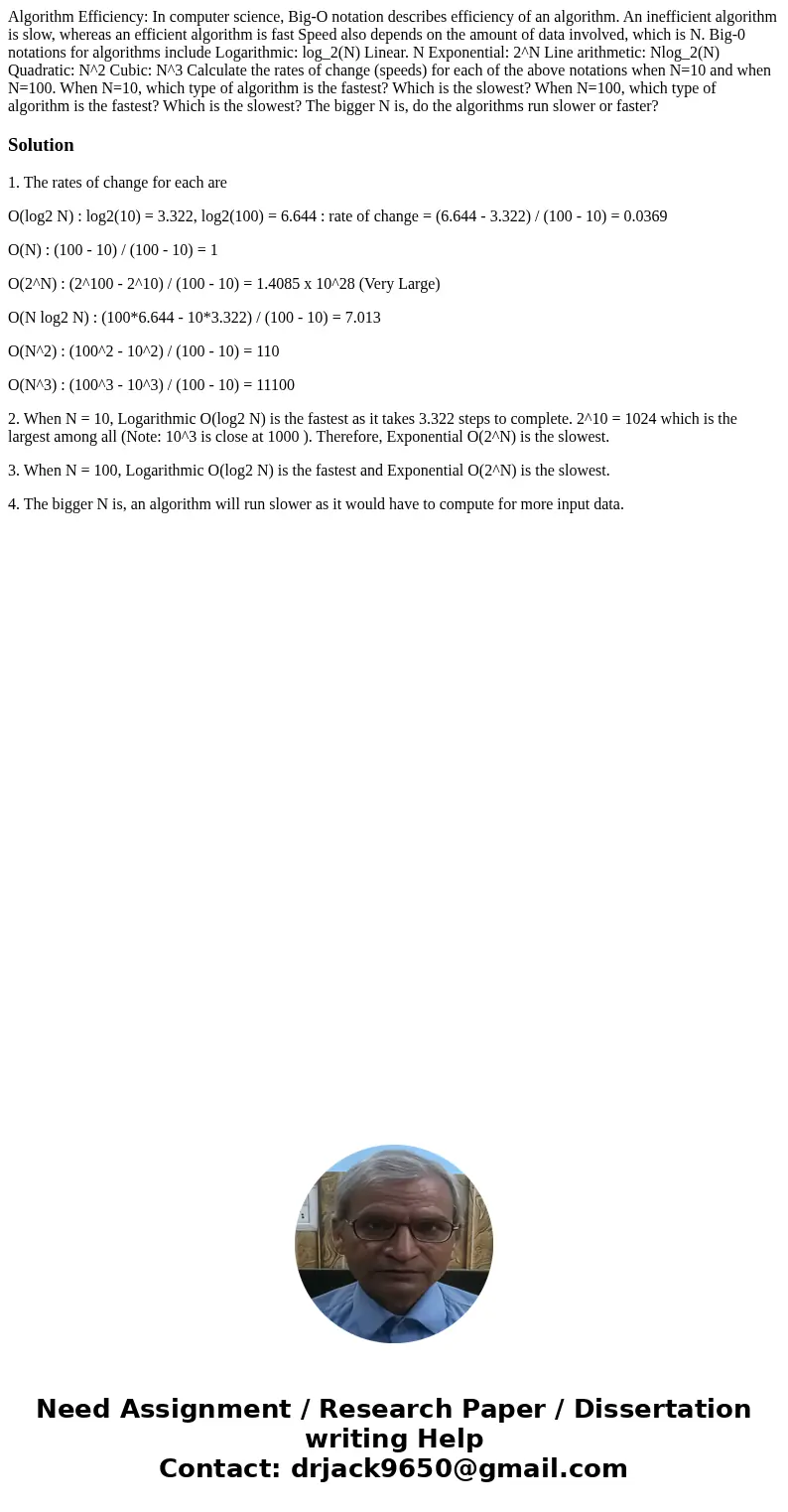Algorithm Efficiency In computer science BigO notation descr
Solution
1. The rates of change for each are
O(log2 N) : log2(10) = 3.322, log2(100) = 6.644 : rate of change = (6.644 - 3.322) / (100 - 10) = 0.0369
O(N) : (100 - 10) / (100 - 10) = 1
O(2^N) : (2^100 - 2^10) / (100 - 10) = 1.4085 x 10^28 (Very Large)
O(N log2 N) : (100*6.644 - 10*3.322) / (100 - 10) = 7.013
O(N^2) : (100^2 - 10^2) / (100 - 10) = 110
O(N^3) : (100^3 - 10^3) / (100 - 10) = 11100
2. When N = 10, Logarithmic O(log2 N) is the fastest as it takes 3.322 steps to complete. 2^10 = 1024 which is the largest among all (Note: 10^3 is close at 1000 ). Therefore, Exponential O(2^N) is the slowest.
3. When N = 100, Logarithmic O(log2 N) is the fastest and Exponential O(2^N) is the slowest.
4. The bigger N is, an algorithm will run slower as it would have to compute for more input data.

 Homework Sourse
Homework Sourse